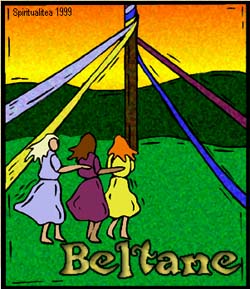Q: I am told that there is a special energy in stones, rocks, crystals,
and other natural earth formations. how does one go about *feeling* the
energy in these objects, how does one meditate on these things, and what
else
are they used for?
— Marley
A: The energy that is attributed to stones and crystals is usually a
product of an association, emotion, or other sense that someone feels
about the stone. It may not necessarily be the case that a spark like
lightening jumps off that chunk of obsidian, but its smooth surface may
spark images in your mind’s eye that are just as potent.
Continue reading “Ask Phoenix: The Magickal Properties of Stones, Rocks & Crystals”
 To gain the love of someone: On a night of the full moon, walk to a spot
To gain the love of someone: On a night of the full moon, walk to a spot
 Now
Now